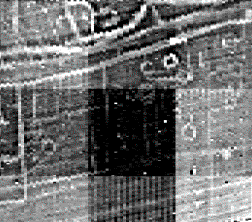
Common Operator Errors
First and foremost, do not have any iron or steel objects on your person! It cannot be stressed too highly that the smallest fragment of iron will have severely detrimental effects on the survey results. These include eyelets on boots and zips on clothing. Often, good boots will have nails in the soles, so if you have not checked your footware, test them by bringing them close to the instrument after it has been zeroed. If the numbers suddenly increase, then you cannot wear those particular boots when conducting a magnetic survey.
Unlike other forms of geophysical survey, surveying on foot with a fluxgate gradiometer is prone to a number of different operator errors. These problems, and how to correct them, are discussed below.

This occurs primarily if the zero reference point chosen is not a good one (i.e. if it is near an iron object in the ground), or if the instrument is not returned, balanced and re-zeroed on the reference point at regular intervals. It can also occur if, because the area to be surveyed is large and the zero point is subsequently moved, a different underlying value is selected for the new zero point. The problem can be avoided by ensuring that the zero reference point chosen is reliable, and by consistent checking of the alignment and balance of the machine. If the zero point has to be moved, ensure that the machine is balanced and set to zero on the old point before establishing the new zero point.
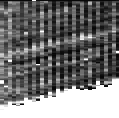
Striping in magnetic data is mainly seen in data collected using the
zigzag
traverse method. It is caused by the machine being at a different
alignment for alternate traverses, and the results of this can be
exacerbated if the machine drift is occurring during the survey.
Learning to hold the machine in the same alignment for both traverses is
vital, or alternatively the parallel
method of traverse will help to alleviate this problem. An extreme
form of striping will occur if the operator is carrying an iron object
(i.e. a set of keys in a pocket) or wearing footwear with an iron
content. This extreme form of striping is virtually impossible to deal
with, as the differences in alternate traverses are so great, and the
data is compromised by the magnetic effect of the iron object. It is
normally necessary to re-survey the grid in these cases. Striping can
occur in Bartington dual sensor array surveys when the
zero reference
point chosen is inappropriate, i.e. where the readings at this point for
both sensors are slightly different, or when one of the sensors drifts
relative to the other.
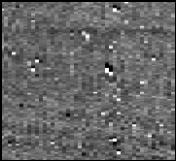
Banding is a problem that can be seen at the beginning or the end of each traverse (seen here as a dark line across the top of the image to the left). It is commonly displayed as either a lighter or darker area along the edge of the grid, and is caused by an operator holding the instrument at a different angle when beginning or finishing each traverse. It can be solved by ensuring that walking speed is attained before beginning each traverse, and that the end of each grid is passed over without turning the body for the next line.
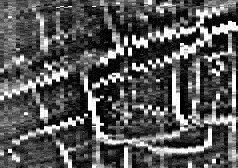
Staggering in the data is almost always seen only when using the zigzag traverse method. It occurs when the operator does not have the machine on the markers at the same place on alternate traverses. The effect is exacerbated when surveying using a higher spatial resolution. Providing it is a consistent error, post-processing software can deal with staggering, but it would be better if the operator was made aware of this problem, and could correct it with a slightly different walking technique. The alternative is to adopt the parallel traverse method.
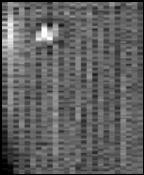
Periodic errors occur as a set of linear differences along the line of the traverse, and are caused primarily by a “loping” style of walking, where shoulders are moving up and down. It can also be caused when the operator is attempting to match his/her pace to the guide “beeps” in a striding fashion, or if the instrument is not being held firmly, but being allowed to wobble around too much. Some machines are more susceptible to this form of error then others, but the problem can generally be solved by initially slowing down the normal walking pace of the operator, so that they are forced to walk in a different way.